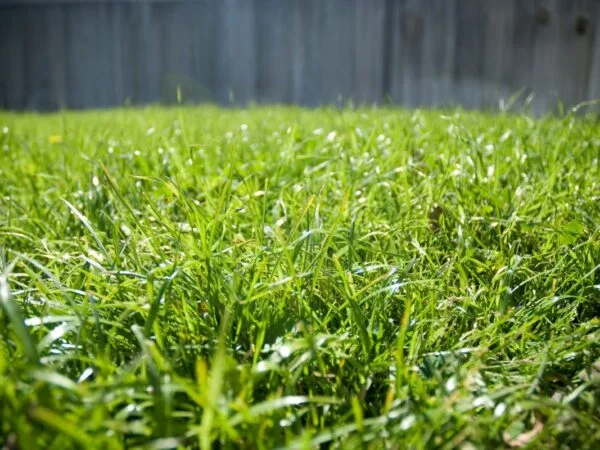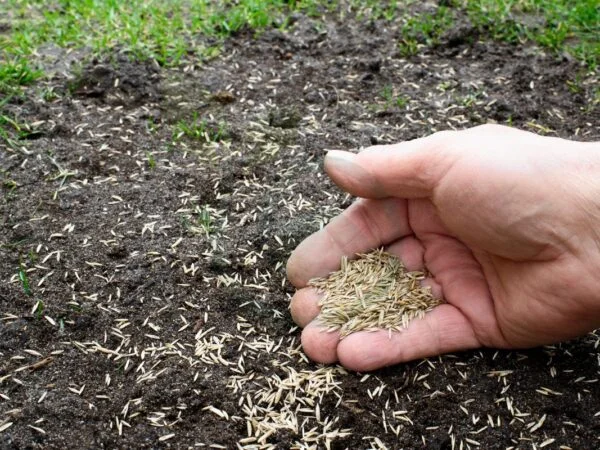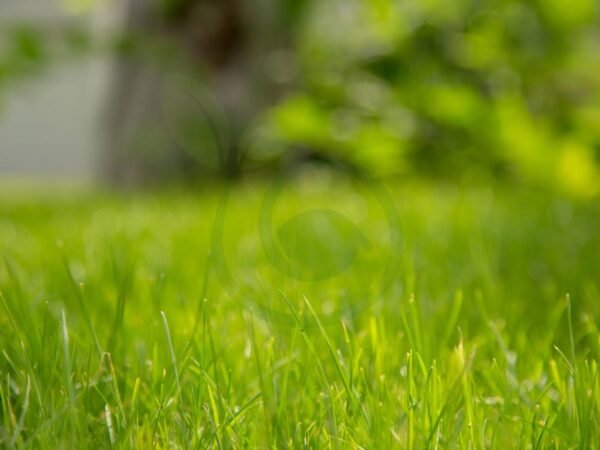Curious about planting grass seed in March? Wondering if it's the right time to start your lawn project? Contrary to popular belief, March can be an ideal month to sow grass seed, kickstarting a lush and vibrant lawn. By leveraging the cooler temperatures and ample moisture of early spring, you can give your grass a head start before the heat of summer sets in. Whether you're repairing bare patches or establishing a new lawn, March offers favorable conditions for successful germination and growth. Stay tuned to discover essential tips and tricks for planting grass seed this month!
Key Takeaways
- Timing is Key: Planting grass seed in March can be successful, but understanding the optimal seeding time for your specific region is crucial.
- Choose Wisely: Selecting the right grass seed that suits your soil type, local climate conditions, and is safe to plant in warm weather is essential for a successful lawn.
- Prepare the Ground: Properly prepare the soil by removing debris, tilling, and ensuring good seed-to-soil contact for optimal germination.
- Sow Carefully: Follow recommended seeding rates, use a spreader for even distribution, and gently rake the seeds into the soil for best results.
- Feed Appropriately: Implement a fertilization strategy that matches your grass type and apply nutrients at the right time to support healthy growth.
- Keep it Moist: Water newly planted grass consistently to keep the soil moist but not waterlogged, aiding in germination and root development.
Optimal Seeding Time
Spring Seeding Benefits
Planting grass seed in spring offers several advantages. Overseeding during this time helps to rejuvenate existing lawns, promoting thicker and healthier grass coverage. The mild temperatures and increased sunlight support rapid seed germination.
Spring seeding is particularly effective in filling in bare areas, resulting from winter damage or heavy foot traffic. By overseeding during this season, you can address these problem spots efficiently, leading to a more uniform and lush lawn overall.
To ensure the success of spring seeding, proper maintenance practices are crucial. Regular watering, adequate fertilization, and protection from pests are essential steps to nurture newly planted grass seeds effectively.
Best March Conditions
The optimal time frame for planting grass seed in March typically falls towards the latter part of the month when temperatures begin to rise consistently. This period provides an ideal environment for seed germination and early growth.
Before seeding your lawn in March, it's essential to prepare the soil adequately. This involves clearing any debris or weeds from the area, loosening compacted soil, and ensuring proper drainage for optimal root development.
Verticutting plays a significant role in preparing the soil for successful germination by creating small furrows that allow seeds to make direct contact with the soil. This process promotes better seed-to-soil contact, enhancing germination rates.
Grass Germination Timing
Grass seeds planted in spring typically start germinating within 5 to 30 days after sowing, depending on various factors such as grass type and environmental conditions. Warmer temperatures accelerate germination rates.
Factors like consistent moisture levels and moderate temperatures influence how quickly grass seeds sprout and establish themselves. Monitoring these conditions closely can help ensure timely and uniform germination across your lawn.
After germination, adjusting watering frequency is crucial to support healthy growth without overwatering or underwatering newly established grass. Maintaining slightly moist soil promotes strong root development during this critical phase.
Seed Selection
Suitable Grass Types
When considering seed selection for March planting, opt for cool-season grasses like Kentucky bluegrass and tall fescue. These varieties thrive in the early spring temperatures and establish well during this time. Selecting grass seed that is safe for your region's climate is crucial to ensure successful growth.
- Recommended turf grass varieties: Kentucky bluegrass, tall fescue
- Characteristics of suitable grass types: Thrive in early spring temperatures, establish well
- Importance of selecting the right grass type: Ensure adaptability to local conditions for optimal growth
Germination Requirements
To achieve successful seed germination in March, adequate moisture and temperature are essential factors. The soil should be kept consistently moist but not waterlogged to promote sprouting. Ideal temperatures ranging between 60-75°F support rapid germination and initial growth stages.
- Key requirements for successful germination: Adequate moisture levels, optimal temperature range
- Role of moisture and temperature: Promote sprouting and support initial growth
- Consistent care importance: Ensure proper watering without waterlogging, maintain ideal temperature conditions
Soil Preparation
Testing Soil
Soil testing before spring seeding is crucial for successful grass growth. It helps identify nutrient deficiencies and pH levels that affect plant health. By analyzing soil composition, you can adjust fertilization to optimize seedling success rates.
Leveling Surface
Before planting grass seeds in March, ensure the ground surface is level. This promotes uniform seed distribution and prevents pooling of water that can hinder germination. Techniques like raking and rolling help achieve a smooth and even surface for optimal seed-to-soil contact.
Aeration Benefits
Aerating the soil prior to spring seeding brings several benefits to your lawn. This process helps improve soil structure by reducing compaction, allowing roots to penetrate deeper for better nutrient uptake. Aeration enhances water infiltration, promoting healthier root systems for lush green grass.
Sowing Seeds
Seeding Techniques
Planting grass seeds in March requires specific techniques to ensure successful growth. Begin by selecting high-quality seeds suitable for your region's climate. Broadcast the seeds evenly across the lawn using a spreader to achieve uniform coverage. Ensure proper seed-to-soil contact by lightly raking the soil after broadcasting.
To promote optimal germination, water the seeded area gently and frequently to keep the soil moist. Avoid over-watering, as it can lead to seed rot or wash away the seeds. Taking advantage of warmer days in March helps accelerate germination and establishment of new grass plants.
Dealing with Bare Spots
Bare spots on lawns can be unsightly but are easily remedied through spring seeding techniques. Identify common causes of bare areas such as heavy foot traffic, pet urine, or disease outbreaks. Address these issues before reseeding to prevent future problems.
When tackling bare spots, prepare the soil by loosening it with a rake and adding a thin layer of compost for nutrients. Select grass seed varieties that match your existing lawn for seamless integration once they grow. After seeding, cover the area with straw mulch to retain moisture and protect against birds eating the seeds.
Fertilization Strategy
Using Fertilizer
Using fertilizer is crucial when planting grass seed in March. It provides essential nutrients for optimal growth. Applying starter fertilizers right after seeding helps new seedlings establish strong roots. This step is vital for their survival and development.
Nitrogen-rich fertilizers play a significant role in promoting healthy grass growth during the spring season. They support lush, green foliage and overall plant vigor. When applied correctly, these fertilizers enhance the color and density of the grass, creating a vibrant lawn.
Incorporating fertilizer into your grass seeding routine ensures that the newly planted seeds have access to the necessary nutrients for robust growth. Starter fertilizers contain key elements like phosphorus, which aids in root development and establishment. By following proper application guidelines, you can set your lawn up for success.
Watering Newly Planted Grass
Initial Watering
After seeding grass in March, ensure the soil is consistently moist but not waterlogged. Avoid overwatering. To facilitate seed germination, lightly water the seeded area multiple times a day to maintain moisture. Consistent watering is crucial for successful seed germination, promoting healthy root development and initial growth.
Maintenance Watering
When maintaining newly planted grass in spring, adjust watering frequency based on weather conditions. Monitor the soil moisture regularly to prevent under or overwatering, which can hinder grass growth. As the grass matures, reduce watering frequency but increase the amount of water applied per session.
Post-Germination Care
Early Growth Stages
Newly seeded grass typically germinates within 7-21 days after planting, depending on the grass type and environmental conditions. As the seeds sprout, you can expect to see tiny green shoots emerging from the soil. During this early growth stage, it's crucial to keep the soil consistently moist but not waterlogged to support healthy root development.
Young seedlings are vulnerable to various challenges such as disease, pests, and competition from weeds. To address these issues, consider applying a light layer of mulch to retain moisture and protect the delicate plants. Regular inspection for signs of stress or damage can help you intervene promptly and prevent further issues.
Nurturing young grass plants involves providing adequate sunlight, nutrients, and water. Gradually reduce watering frequency as the grass establishes itself to encourage deep root growth. Avoid over-fertilizing during this stage as it can harm the delicate roots. Proper care during the early growth stages sets a strong foundation for lush, healthy turf in the long run.
Mowing New Grass
Once your newly seeded grass reaches a height of around 3-4 inches, it's time to start mowing. Typically, this occurs about 2-4 weeks after germination when the grass is well established but still tender. Use a sharp mower blade set at a high cutting height (about 2-3 inches) to avoid stressing the young plants.
When mowing new grass, adhere to the one-third rule - never remove more than one-third of the blade length in a single mowing session. Frequent mowing at proper heights encourages tillering and promotes denser turf growth over time. It's essential to alternate your mowing pattern regularly to prevent soil compaction and ensure even cutting across all areas.
To prevent damage during mowing sessions on new grass, avoid cutting wet turf or mowing too frequently in quick succession. Wet blades are prone to tearing rather than clean cuts that promote healthy regrowth. By following these guidelines for mowing newly seeded grass in springtime, you can maintain vibrant and resilient lawn coverage.
Addressing Common Problems
Early Spring Risks
Grass seed planted in March faces potential risks during the early growth stages. Weed invasion, disease susceptibility, and weather impacts are common threats. To mitigate these risks, ensure proper soil preparation before seeding.
Early spring seeding increases the chances of weed infestation due to warmer temperatures. Disease susceptibility is also higher in newly seeded lawns during this period. Protect the lawn by using disease-resistant grass varieties.
To protect your lawn from adverse weather impacts, consider covering the seeded area with a light mulch layer. This helps retain moisture and provides insulation against extreme temperatures. Monitor weather forecasts for any impending storms or frost.
Preventing Issues
Preventive measures play a crucial role in ensuring successful grass seed establishment in March. After seeding, regularly inspect the lawn for signs of weed growth and promptly remove any unwanted plants.
Pest problems can hinder grass growth post-seeding; therefore, implement pest control measures as needed to safeguard your lawn's health. Consider using natural remedies or environmentally friendly pesticides to minimize chemical exposure.
For a successful lawn establishment process, water newly seeded areas consistently but avoid overwatering to prevent fungal diseases. Follow a regular watering schedule based on soil moisture levels and weather conditions post-seeding.
Seasonal Maintenance Tips
Spring Seeding Maintenance
After completing spring seeding, it's crucial to focus on long-term maintenance for your lawn. Regular fertilization is essential to ensure proper growth and health of the grass. Proper fertilization provides the necessary nutrients for the newly seeded grass to thrive.
Watering plays a vital role in maintaining a healthy lawn post-seeding. It's important to water deeply but infrequently, allowing the roots to grow deeper into the soil. This helps establish a strong root system, making the grass more resilient to drought conditions.
Regular mowing is key to keeping your lawn looking neat and healthy. Ensure that you mow at the correct height based on the type of grass you have planted. Mowing too short can stress the grass and make it more susceptible to diseases.
To sustain a lush green lawn, consider implementing seasonal maintenance tasks such as aerating and dethatching. Aerating helps loosen compacted soil and allows air, water, and nutrients to reach the grassroots effectively. Dethatching removes dead organic material from your lawn, preventing it from suffocating new growth.
For ongoing care after spring seeding, keep an eye out for any signs of pests or diseases that may affect your newly established grass. Promptly address any issues by using appropriate treatments or seeking professional help if needed.
Closing Thoughts
You've now got the know-how to successfully plant grass seed in March. By following the steps outlined, you're on your way to a lush, green lawn that will be the envy of the neighborhood. Remember, timing is key, so get those seeds in the ground at the optimal time for best results. Choose the right seed, prepare your soil well, and provide proper care post-germination to ensure healthy growth.
Your efforts will pay off with a vibrant lawn that enhances your outdoor space. So, grab your gardening tools and get started on transforming your yard into a beautiful oasis. Happy planting!
Frequently Asked Questions
Can grass seed be planted in March?
Yes, you can plant grass seed in March. It is a suitable time for planting cool-season grasses like fescue and bluegrass. Ensure the soil temperature is at least 50°F for optimal germination.
What is the best time to sow grass seeds?
The optimal seeding time varies depending on the type of grass. Cool-season grasses should be sown in early fall or early spring, while warm-season grasses thrive when planted in late spring or early summer.
How should I prepare the soil before planting grass seeds?
Prepare the soil by removing debris, tilling to break up compacted areas, and adding organic matter like compost. Conduct a soil test to determine nutrient levels and pH balance for ideal seed germination.
How often should newly planted grass seeds be watered?
Keep newly planted grass seeds consistently moist by watering lightly multiple times a day to prevent drying out. Avoid overwatering as it can lead to rotting seeds or fungal diseases.
What are some common problems encountered when planting grass seeds?
Common problems include poor seed-to-soil contact, uneven watering, inadequate sunlight, weed competition, and improper fertilization. Address these issues promptly to ensure successful germination and establishment of your lawn.
Image Source: Paid image from CANVA




